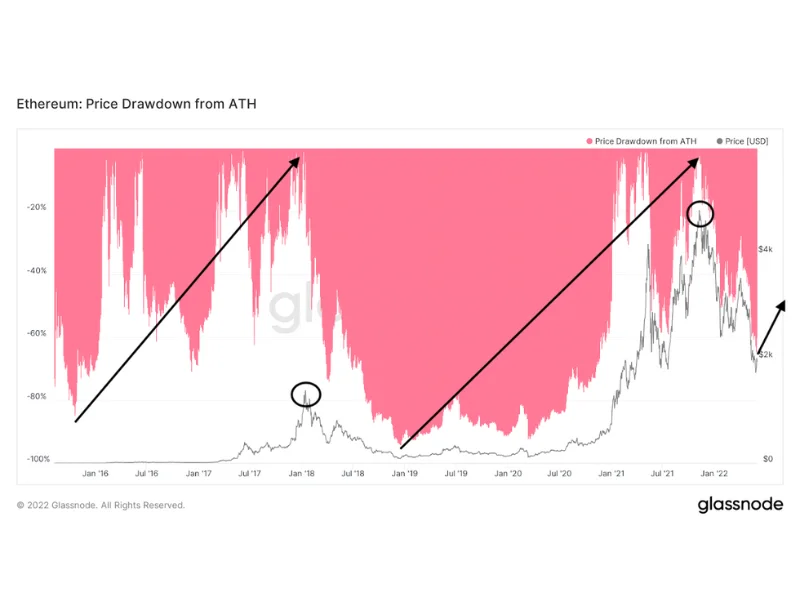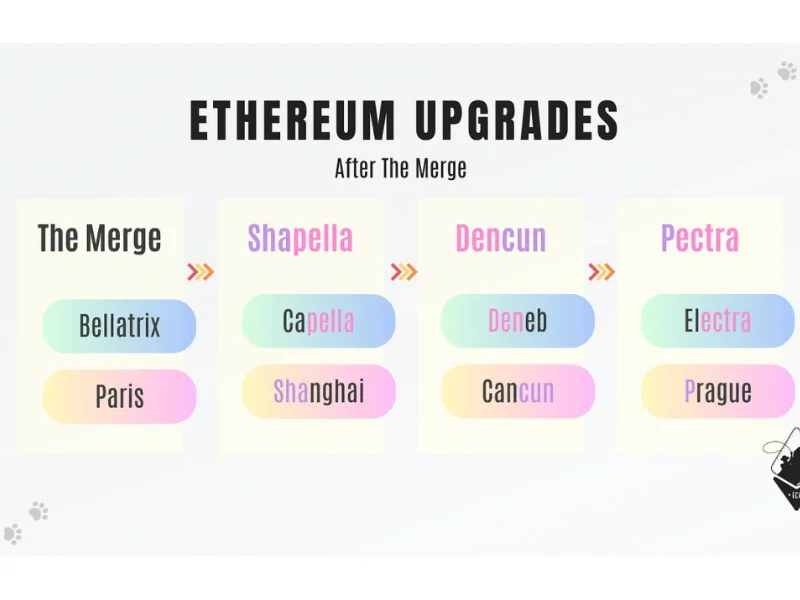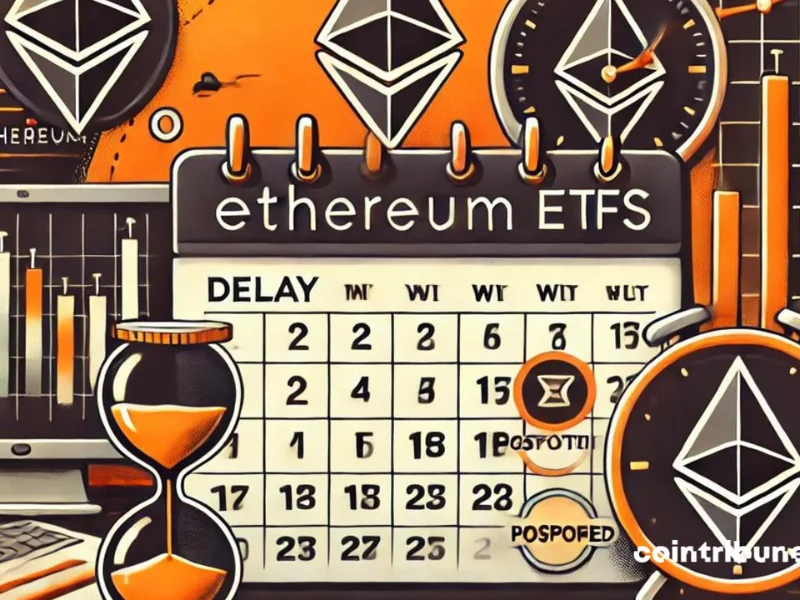1) Introduction
Purpose of the article
This piece gives you a current, data-driven outlook on Ethereum Price Forecast following the Shanghai/Capella (“Shapella”) upgrade that enabled withdrawals in April 2023—and the subsequent Dencun upgrade (March 2024) that slashed Layer-2 (L2) fees. We synthesize the latest market data, on-chain trends, regulation, and adoption to frame ETH’s near- to medium-term price scenarios. Key sources cited throughout include CoinDesk, Glassnode, Bloomberg Crypto, CoinShares, CoinGecko, DeFiLlama, Kaiko, BIS/IMF, and others for balance and depth.
Why staying updated matters
Crypto markets move fast and are highly reflexive: macro, regulation, liquidity, and technology can reprice assets in hours. As of August 26, 2025 (Asia/Karachi), the global crypto market cap is around $3.8–3.9T, with BTC dominance near the mid-50s% and ETH dominance ~14%—figures that have swung materially around recent volatility and new highs. Monitoring these shifts helps everyone—from first-time buyers to treasurers and fund managers—avoid narrative traps and position into catalysts early.
What you’ll learn (key themes)
- Market movements: where ETH sits within the broader cycle; how ETFs and liquidity shape price.
- Technological innovation: the impact of the Merge → Shanghai → Dencun → (upcoming) Pectra on supply, fees, and adoption.
- Regulation: SEC, MiCA, FCA and high-profile cases that frame investor access and risk.
- Adoption & sentiment: retail and institutional flows, on-chain activity, and social/behavioral signals.


2) Global Market Trends
Current performance & capitalization
Crypto markets entered late-August with heightened volatility following a weekend “flash-crash,” but ETH recently printed new cycle highs near ~$4.9k on some venues before pulling back. In the last 24h, global market cap and ETH have fluctuated alongside macro expectations for US rate cuts. Real-time dashboards show global market cap ~$3.88T and ETH $4.4–4.6k with mixed 24h/7d performance depending on the venue snapshot.
24h / 7d context:
- Kaiko reports ETH broke its 2021 ATH over the weekend on strong spot demand before easing—volumes remain elevated, implying constructive microstructure despite volatility.
- News coverage highlights the weekend reversal after a sharp BTC move, a reminder of cross-asset fragility even amid an uptrend.
Institutional involvement & macro influence
- ETFs & ETP flows: CoinShares’ latest weekly shows large but rotating flows, with recent weeks featuring notable ETH resilience vs. BTC outflows and earlier record-setting total inflows this summer. This institutional bid is now a structural driver of both upside and downside liquidity.
- Spot ETH ETFs (US): Launched July 23, 2024, debuting with >$1B trading volume and ~$107M net inflows Day 1; flows since then have at times accelerated to record daily net inflows this month. These vehicles broaden access and help anchor price discovery.
- Macro: Rate-cut expectations and the USD’s path continue to whip risk assets; crypto is no exception. Short bursts of deleveraging and ETF flow rotations can amplify 24h and 7d swings.
Bottom line: Market beta remains constructive but flow-driven. ETH’s positioning versus BTC toggles with ETF demand, macro data, and liquidity conditions tracked by Kaiko.
3) Technological Developments and Innovations
Blockchain advancements that matter for ETH
- Dencun (EIP-4844): Activated March 13, 2024, introducing proto-danksharding (blobs) and dramatically reducing L2 data costs—a structural fee cut for rollups that fuels L2 adoption and throughput. CoinDesk documents the intent and impact; Fidelity research later noted a post-Dencun jump in L2 transactions.
- Supply dynamics post-Dencun: Lower base-layer fees mean less ETH burned (EIP-1559), and ETH has at times been net-inflationary again—a nuanced but important change to the “ultrasound money” narrative.
- What’s next—Pectra: Developers are preparing the Pectra upgrade (Prague+Electra), with workstreams focused on UX and account abstraction improvements that could further enhance dApp usability. (Timing is subject to change; follow core dev notes.)
Solana & others: Competing L1s continue to innovate (client diversity, parallelization), while Ethereum Price Forecast L2-centric roadmap seeks to scale without sacrificing security. Kaiko’s liquidity reads show improving depth across majors during risk-on phases—supportive for capital rotation across chains.
Security enhancements in crypto
- Zero-knowledge proofs (ZKPs) have matured from research to production (zkEVMs), strengthening privacy and scalability.
- Smart-contract risk remains, but DeFiLlama’s “Hacks” & TVL datasets and research shops like Immunefi and Kaiko provide continuous telemetry on incidents and liquidity recovery, helping allocators quantify risk.
Smart contracts & dApps’ real impact
- DeFi, stablecoins, and real-world-asset (RWA) tokenization continue to be sticky use cases. Messari’s sector reports, Dune dashboards, and DeFiLlama TVL show which protocols retain users and depth—Aave/Uniswap/Lido on Ethereum Price Forecast remain core pillars, while other ecosystems see episodic surges.
4) Regulatory and Legal Landscape
Current regulatory updates
- MiCA (EU): Stablecoin rules took effect June 2024, with the rest applying by December 2024; this remains the most comprehensive framework in a major bloc and continues to shape issuer behavior in 2025.
- UK (FCA/BoE): The FCA’s financial promotions regime (live since Oct 2023) tightened marketing standards; in May 2025 the FCA proposed rulemaking for stablecoin issuance and custody, signaling impending changes for UK market structure.
- US: Over 2024–2025, the US approved spot ETH ETFs (2024), and policy tone has shifted in 2025 with evolving SEC posture and Congressional attention—though rulemaking remains contested and state actions continue. (See Reuters and Bloomberg coverage for texture.)
Legal cases & precedents
- Binance/CZ: $4.3B US settlement (Nov 2023) with DOJ; CZ sentenced to four months (Apr/May 2024). These outcomes set compliance baselines for large exchanges.
- Coinbase: In 2025, Reuters reported the SEC moved to dismiss its case against Coinbase—an inflection in the US enforcement stance that may influence listing and staking products going forward. (Other state-level actions remain possible.)
5) Adoption and Market Sentiment
Retail & institutional adoption
- ETFs have opened the gates for pensions, RIAs, and treasury allocators; CoinShares flow data shows persistent ETH allocations even as weekly totals swing with macro.
- Wallets & usage: CoinGecko’s Q2 2025 Industry Report highlights a surge in market cap and shifting exchange/DEX volumes—evidence of broader user participation in 2025 despite episodic pullbacks.
Social media & influencers
- Santiment tracks social sentiment and crowd discussion; late-August reads show sharp sentiment flips around ETH’s run toward $5k and subsequent pullback—classic contrarian signals at extremes.
6) On-Chain and Blockchain Activity
Tracking on-chain activity
Key metrics for ETH now: validator count and staked supply (post-Shanghai withdrawals), transaction activity, and L2 throughput.
- ETH staking: Glassnode/Beaconcha.in charts show steady growth in staked ETH since Shanghai as confidence in withdrawal mechanics took hold. (Open metrics: total staked and deposit counts.)
- L2 adoption: Post-Dencun, L2 transactions rose materially, validating the fee-reduction design goals.
Liquidity and market structure
- Kaiko tracks order book depth, spreads, and volumes; recent research notes ETH liquidity hit annual highs during July’s altcoin rally and again around new highs, with improving depth a tailwind for execution.
- DeFi liquidity: TVL across DeFi sits roughly in the $150–160B range (fluctuates daily with prices), with stablecoin market cap ~$275–280B—useful “pipes” for settlement and on-chain liquidity.
7) Emerging Trends and Future Outlook
NFTs: growth and impact
While NFT floor prices remain cyclical, the category is shifting toward utility (game assets, IP licensing, ticketing). Policy think-tanks like CoinCenter analyze long-run implications (property rights, speech), while Dapp/NFT reports show rotations in volume tied to ETH price and gas conditions. (Use these to gauge directional interest rather than absolute valuation.)
DeFi’s continued evolution
Protocols like Aave and Uniswap remain core, while L2s expand addressable users via cheaper transactions. DeFiLlama helps compare TVL and liquidity across chains and venues to spot where risk-adjusted yields justify capital.
Stablecoins and CBDCs
- BIS 2024/2025 surveys indicate ~90% of central banks are researching CBDCs; IMF research (July 2025) explores cross-border stablecoin flows, underscoring the policy importance of private dollar-stablecoins. Atlantic Council tracks live pilots (e.g., India’s e-rupee expansion in 2025). These parallel paths (CBDCs vs. stablecoins) shape fiat rails into crypto—crucial for ETH’s demand as “blockspace.”
8) Investor Insights and Sentiment Analysis
Behavior patterns
- Nansen shows how “smart money” and whales rotate between CEX, L2s, and staking/lending venues; entity-level holdings (staking contracts, ETFs/custodians) now represent a large share of supply and can dampen free float during risk-on periods.
- Santiment highlights sentiment extremes that often precede reversals; tracking social + funding + on-chain activity provides useful triangulation for entries/exits.
Risk management in crypto portfolios
- Use position sizing, cash/stablecoin buffers, and hedges (options/perps).
- Cross-compare on-chain liquidity (DeFiLlama) with order-book depth (Kaiko) before moving size.
- Overlay regulatory calendars (MiCA/FCA consultations, US policy) and upgrade timelines (Ethereum Price Forecast core dev calls) to pre-position with defined risk.
9) Case Studies & Market Examples
Bitcoin halvings & price impact
Past BTC halvings (most recently April 20, 2024) historically tighten issuance, often followed by strong cycles with lags. CoinDesk’s coverage of cycle dynamics provides helpful context when comparing ETH’s path in a BTC-led market.
Ethereum Price Forecast transition and upgrades
- The Merge (Sept 2022) cut issuance dramatically;
- Shanghai/Capella (Apr 2023) enabled withdrawals, boosting staking participation;
- Dencun (Mar 2024) reduced L2 costs, spurring L2 adoption but lowering base-layer burns, so ETH oscillates between mild inflation and deflation as usage shifts. Expect Pectra and further account-abstraction work to improve UX and expand use cases.
10) Impact of Global Events on Crypto
Economic factors driving adoption
Inflation, rate expectations, and liquidity cycles remain the primary macro drivers. Institutional flows now respond quickly via ETFs, amplifying the speed of repricing around macro events (Jackson Hole, CPI/PCE, payrolls).
Geopolitics and market behavior
Policy divergence (EU’s MiCA vs. evolving US stance; UK’s tightening promotions + emerging stablecoin rules) affects listing, custody, and product design, which ultimately channels capital into or away from ETH and broader crypto.
11) Key Insights from Industry Experts
- Bloomberg Intelligence (Balchunas/Seyffart) framed realistic ETH ETF flow expectations at launch—helpful baselines for how much new demand might be structural vs. rotational from legacy products like ETHE.
- Kaiko Research emphasizes liquidity as the true north—ETH’s break above ATH on robust spot volume and improving depth is a healthier signal than a thin, leverage-driven spike.
- CoinDesk provides timely upgrade and policy coverage—Dencun’s fee cuts and MiCA’s deadlines were well-telegraphed for months, letting prepared investors allocate accordingly.
12) Ethereum Price Forecast (Post-Shanghai through 2026)
Starting point (Aug 26, 2025): ETH ~$4.4–4.6k after printing new cycle highs near ~$4.9k. Flows are ETF-driven; L2 adoption strong; base-layer burns softer post-Dencun; regulation is turning more structured in Europe/UK and evolving in the US.
Base Case (6–12 months)
- Range: $4,000–$7,000 with higher realized volatility.
- Drivers: Net positive ETF flows (intermittent but persistent), improving liquidity (depth and volumes), and continued L2 adoption.
- Risks: Macro shocks (growth/inflation surprises), sharp ETF outflow weeks, and fee-burn softness if base-layer activity stays low relative to L2.
Bull Case
- Range: $7,000–$10,000+ (price discovery).
- Catalysts:
- Sustained large net inflows into ETH ETFs (multi-week streaks).
- Pectra/AA features improving UX; major stablecoin/RWA expansion on L2s; renewed on-chain activity increases fee burn, tilting supply toward neutral/deflationary spells.
- Clearer US policy + global consistency (MiCA/FCA finalized rules), reducing compliance overhang and boosting institutional participation.
- Sustained large net inflows into ETH ETFs (multi-week streaks).
Bear Case
- Range: $2,800–$3,800.
- Catalysts:
- Macro risk-off (hard landing), ETF outflows and liquidity gaps;
- Security incidents or high-profile insolvencies;
- Adverse regulatory surprises that limit staking, stablecoins, or exchange access.
- Macro risk-off (hard landing), ETF outflows and liquidity gaps;
Positioning takeaway: Let flows and liquidity be your compass. Pair Kaiko’s depth/volume and CoinShares weekly with on-chain (Glassnode/Beaconcha.in) to validate whether moves are flow-driven spikes or usage-anchored trends.


13) Conclusion
Recap: ETH’s post-Shanghai era is defined by higher staking participation, cheaper L2 blockspace (Dencun), and institutional access via ETFs. Fundamentals (developer activity, protocol revenues via L2s/DeFi) and global regulation continue to mature, though fee-burn dynamics are more nuanced post-Dencun.
Stay informed: For timely, credible updates, keep CoinDesk (policy/tech), CoinShares (flows), Glassnode (on-chain), Kaiko (liquidity), DeFiLlama (TVL), CoinGecko (market caps/prices), and Bloomberg Crypto (macro & ETFs) in your weekly rotation.
Call to action: Track a simple dashboard weekly—ETF flows, ETH price/vol, Kaiko depth, L2 activity, and regulatory milestones—and adjust exposure with clear rules for adds, trims, and hedges.
14) FAQs (10)
1) Is ETH still “ultrasound money” after Dencun?
Not strictly. Lower fees reduced EIP-1559 burns, and ETH has seen periods of net inflation since Dencun. The supply path now depends more on usage cycles: heavy on-chain demand can still tip ETH deflationary, but average conditions post-Dencun have been closer to neutral or mildly inflationary.
2) How important are spot ETH ETFs for price?
They’re a key marginal buyer. Initial launch (July 23, 2024) logged >$1B in first-day volume and positive net inflows; 2025 has seen multi-day surges that correlate with strong upside follow-through in ETH. Outflow weeks can amplify drawdowns.
3) Are gas fees “fixed” now that Dencun is live?
No. Dencun reduced data costs for L2s, dramatically lowering most end-user fees on rollups, but base-layer gas still flexes with demand. The fee-burn (and thus supply change) will vary with usage.
4) What on-chain metrics should I watch for ETH?
Track total staked ETH, validator growth, L2 transactions, and base-layer fees/burn. Glassnode and Beaconcha.in provide open charts; rising activity + rising fees generally support stronger burn and network health.
5) How do regulators currently view ETH?
In the EU, MiCA is live in phases; in the UK, the FCA controls promotions and is consulting on stablecoins/custody; in the US, posture is evolving with ETH ETFs approved and enforcement tone shifting in 2025. Always verify your jurisdiction’s rules.
6) What’s the role of stablecoins in ETH’s outlook?
Stablecoins are core liquidity rails for DeFi/DEXs and settlement, underpinning demand for blockspace. BIS/IMF research underscores their growing role in cross-border flows; that’s net-positive for ecosystems like Ethereum Price Forecast that host large stablecoin supply and activity.
7) Where can I see if “smart money” is buying ETH?
Monitor Nansen for entity-level holdings and whale flows, CoinShares for ETP flows, and Kaiko for spot depth/volume. Confluence across these tends to precede durable moves.
8) How does ETH compare to Solana and other L1s technically?
Different designs: Ethereum prioritizes modularity + L2s; Solana pushes monolithic throughput. Market leadership rotates; Kaiko liquidity shows that when altcoin liquidity improves, rotations accelerate—but Bitcoin often remains the liquidity anchor in risk-off periods.
9) What’s the single best “dashboard” for a beginner?
Start with CoinGecko global charts (market cap/dominance), ETH price page, DeFiLlama TVL, and one Kaiko weekly read for liquidity context. Add CoinShares weekly flows for institutional color.
10) My risk plan in one line?
Size positions so you can survive volatility, then use flows + liquidity + on-chain usage to pyramid into strength and cut into weakness. Tools cited above help you separate signal (flows/liquidity) from noise (narratives).
